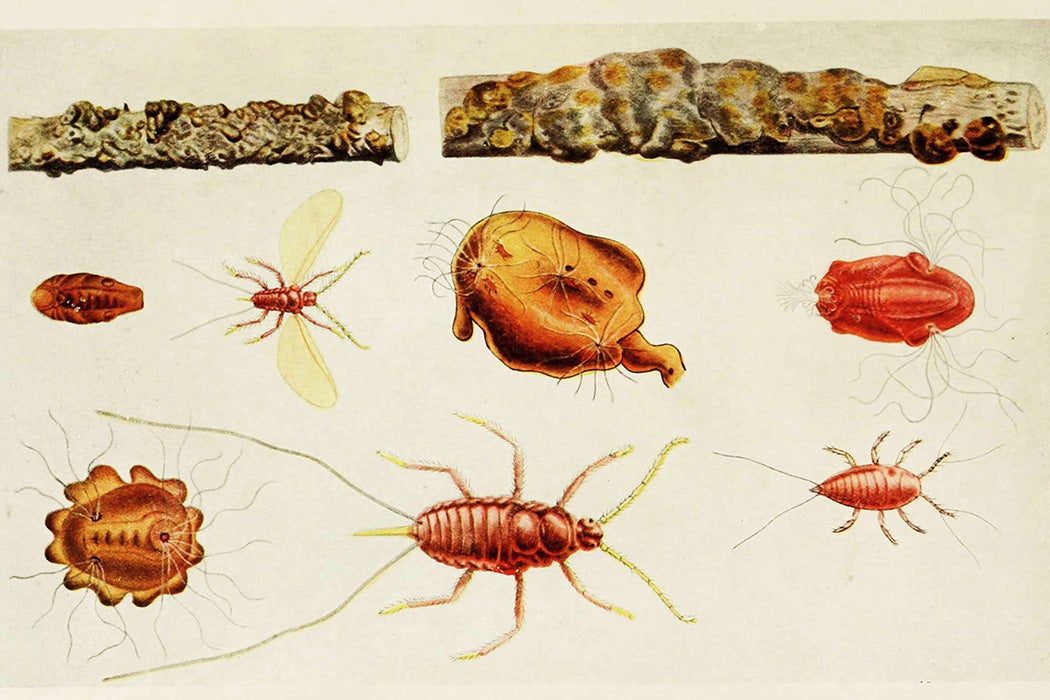Maybe you were first introduced to shellac as a child, mixing it into alcohol in a bucket before helping your parent to paint it on freshly sanded wood. And maybe you knew it came from bugs but didn’t given it much thought then—and you haven’t really thought about it much since. If that scenario seems familiar, you may find Anantanarayanan Raman’s description of how the discovery of the lac insect was received in Europe intriguing and surprising.
Of course this wasn’t so much a “discovery” as much as it was something in use in Asia for centuries first coming to European notice. What’s known in English as “shellac” comes from one of a huge number of species of beetles in Asia. As detailed by Raman, nearly 100 insect species produce an oleoresin. Its journey to shellac starts as a secretion that the insects leave on trees. This hard resin, known as “stick lac,” can be scraped from the branches and then processed. To be used as a varnish, the flakes of lac are dissolved in alcohol. (The word “lac,” from which we get lacquer, can be traced back to the Sanskrit lakh, the word for the insect and also the word for 100,000.)
As Raman describes, in eighteenth-century Europe, the discovery of these creatures was accompanied by scientific discussion of the insects and further considerations for the production and use of their resins. The products of lac had been used for centuries in India and also in China, as a dye, a varnish, and in medicine.
Its arrival in Europe made shellac a household term particularly associated with furniture polish. David St Leger Kelly describes how the arrival of “French polishing” in the early nineteenth century changed English furniture manufacturing. The fact that it can be transported and stored as dry flakes made it particularly convenient. For varnish, the end user can dissolve it in alcohol as they need. Such varnishes naturally dry to a high sheen and are UV resistant, making them ideal for high-quality furniture finishes.
Weekly Newsletter
However, shellac and other insect products also turned out to be adaptable, with even more uses emerging in the industrializing world. Shellac’s moldability meant it also functioned as a proto-plastic. Early phonograph records were made of shellac, and it was used to insulate electrical fuses. It continues to be valued by artists, by cabinet makers, and as a finish for musical instruments. As Raman notes, more recently it has even been used to coat medications to slow their absorption in the intestines. A natural and renewable product, it continues to make itself useful. Thank you, little insects.
Support JSTOR Daily! Join our membership program on Patreon today.







